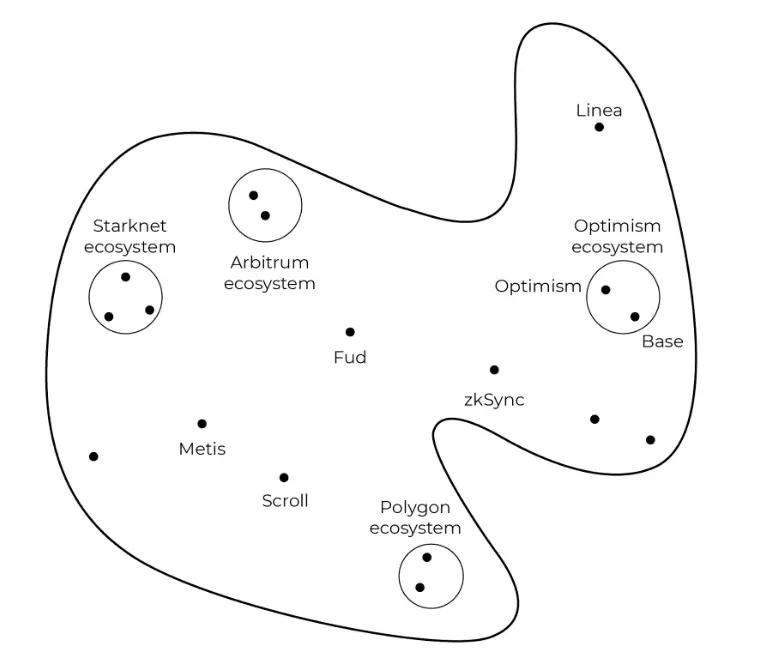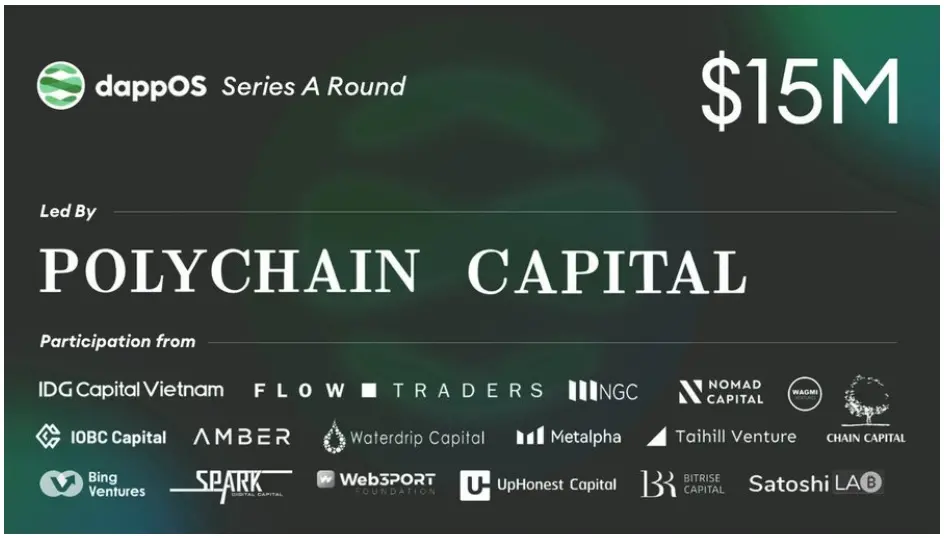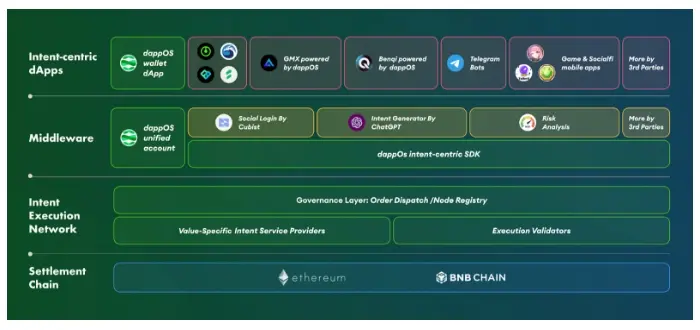Author: 0xdabai
The rapid expansion of blockchain technology brings both opportunities and challenges in achieving scalability and usability in an increasingly fragmented ecosystem. Intent-centric execution network (intent-centric execution network) dappOS innovatively introduces the Optimistic Minimum Staking (Optimistic Minimum Staking) mechanism to improve interaction efficiency at low cost and safely.
At the end of March 2024, dappOS raised US$15.3 million in Series A financing led by Polychain, with a valuation reaching US$300 million. Previously, dappOS completed a seed round of financing and received investment from well-known institutions such as Binance Labs and Sequoia China.
Keywords: dappOS, infrastructure, intent-centric, optimistic minimal staking, Polychain

Ethereum founder Vitalik proposed in his keynote speech at the 2024 Hong Kong Web3 Carnival that the future Ethereum ecosystem will be Layer-2 Centic
With the continuous development of blockchain technology, ease of use and scalability are the focus of current infrastructure. The rise of numerous L1s and L2s marks the beginning of a new era. L1 blockchain is a basic network, such as Bitcoin and Ethereum, and all transactions are processed directly on the chain. However, as these networks grow, congestion and scalability challenges arise.
L2 solutions, such as Bitcoin’s Lightning Network and Ethereum’s OP Rollups, aim to alleviate scalability issues by processing transactions outside the main chain while ensuring their Security is still guaranteed by the underlying L1 blockchain.
However, the prosperity of L1 and L2 has also brought new problems, that is, the separation and fragmentation between blockchain ecosystems. At the same time, the high valuations of L1 and L2 blockchains will also lead to the continuous emergence of new blockchains, attracting large amounts of investment. This growth is expected to further fragment the Web3 ecosystem, making usability and interoperability a difficult task.
The emergence of decentralized applications (DApps) such as Web3 games and Web3 social networking is bringing users from the traditional Web2 world into them. These new users, unaccustomed to the complexities of blockchain technology, seek streamlined workflows and intuitive interfaces. Therefore, a solution and infrastructure that satisfies their usage habits is extremely necessary.
dappOS: Raises $15.3M to launch intent execution network
Amidst the urgent need for simplified, user-centric infrastructure , a solution that carries the hope of bridging the internal gap in the fragmented ecosystem has emerged. dappOS, as an intent execution network, has received US$15.3 million in Series A financing led by Polychain, with the company valuation reaching 300 million Dollar.

Polychain led the round and included contributions from a diverse group of investors, including Nomad Capital, IDG, Flow Traders and NGC. The funds will be used for further technology research and development work.
Previously, dappOS was selected for the fifth quarter of the Binance Incubation Program in December 2022, and received seed round investment from Binance Labs and Sequoia China in July 2023.

The project solves the supply and demand problem within the blockchain ecosystem by creating a two-sided market. On the one hand, service nodes pledge collateral to provide various intent execution services. On the other hand, it provides developers with an infrastructure to efficiently generate intent tasks to meet users’ needs for converting intents into on-chain results.
In order to improve efficiency and versatility, dappOS introduces Optimistic Minimum Staking ( OMS: optimistic minimum staking) mechanism.
OMS requires that each task be associated with a predefined value and potential compensation in the event of failure, allowing tasks to be executed before the results are verified. If a task fails, the network penalizes the responsible service provider through a consensus process, ensuring that either the task submitted by the user is successfully executed or the user receives a pre-specified compensation.
dappOS's OMS system benefits both service nodes - they only need to pledge a minimum deposit slightly higher than the total value of unfinished intent tasks - and users - they enjoy high cost-effectiveness and rapid task execution. The post-task verification process facilitates a decentralized verification strategy, enhancing the efficiency and security of the network in handling diverse use cases.
With more than 20 in-depth cooperation projects, including GMX, BENQI and QuickSwap, dappOS has accumulated more than 350,000 users.
In the rapidly expanding blockchain ecosystem and its complexity, dappOS provides a smooth, user-centered blockchain interaction solution. Its innovative approach promises to redefine how users and developers interact in increasingly fragmented blockchain networks and application scenarios.
The above is the detailed content of dappOS: Polychain leads $15.3M funding round for intent execution network. For more information, please follow other related articles on the PHP Chinese website!




